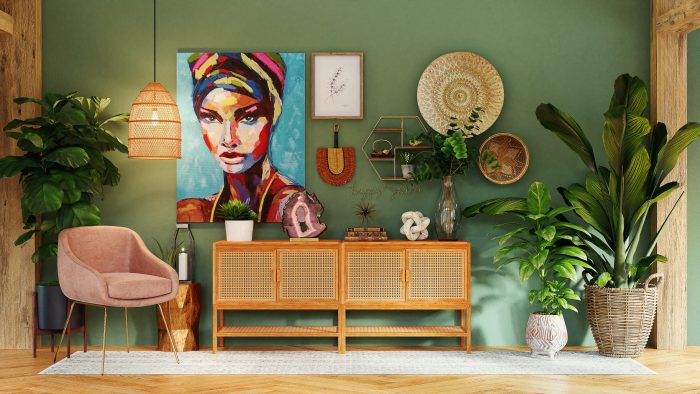
Interior design has a lengthy history, it helps our otherwise empty houses feel like home and it can be a great creative outlet for expressing your personality. Long gone are the days where interior design was a mere necessity that prioritised function over form. As the trends have evolved, especially in the last 50 years, many interior design choices include details that look as good as they are useful and interior designers have become celebrities in their field.
But how does one become an interior designer anyway? And how do these masters decorate their own spaces? We looked into over 250 of the top interior designers from across the world, the path they followed to their current positions, and the spaces they have decorated to find out.
The (Brief) History of Interior Design
First off, what is interior design? Interior design is the art and science of enhancing the inside of a building to make it more aesthetically appealing for the people using the space. It can be as simple as decking out a small flat or as grand as a large train station. Usually, interior design is used to tell a story or evoke an emotion and can be used to your advantage in order to create the ideal atmosphere for visitors and guests. An interior designer is someone who conceives, plans, and coordinates these design projects and the role is much more multifaceted than simply painting the walls and putting together a few pieces of furniture.
Historically, home interiors were put together as part of the process of building – requiring little thought of form over the function of the space. Up until the end of the 18th century, the interiors were up to the homeowner to design although the very wealthy could hire an upholsterer to decorate for them. By the mid-20th century, upholsterers were expanding their businesses and began offering their decorating services to match the growing demand for well-designed hotels, offices, and public buildings.
Nowadays, the design of the inside of a building is just as important as the exterior and more than ever we have begun striving for the perfect combination of effective use of space, user well-being, and functional design. This pursuit of form as well as function has led to the development of the contemporary interior design profession we know today.
The Designers
We analysed over 250 different interior designers from all over the world and looked into the paths they took in order to get to where they are now. It may surprise you that many of them didn’t do an interior design degree.
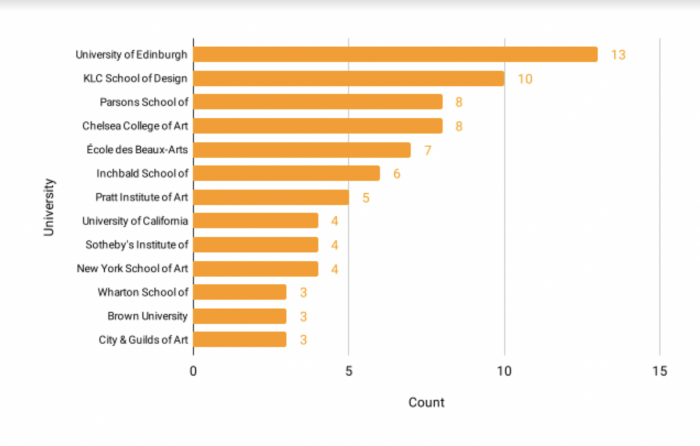
The most popular university for the designers to attend is the University of Edinburgh. Designers such as Nicola Harding and Guy Oliver studied at this prestigious university. Nicola also studied at KLC School of Design which just so happens to be the second most frequented university for designers to attend. What’s more, did you know that over 50 of the designers on our list didn’t attend university at all? So if you consider yourself to have a good eye for detail and design, but don’t want to go through university (or have a degree unrelated to interior design), never fear.
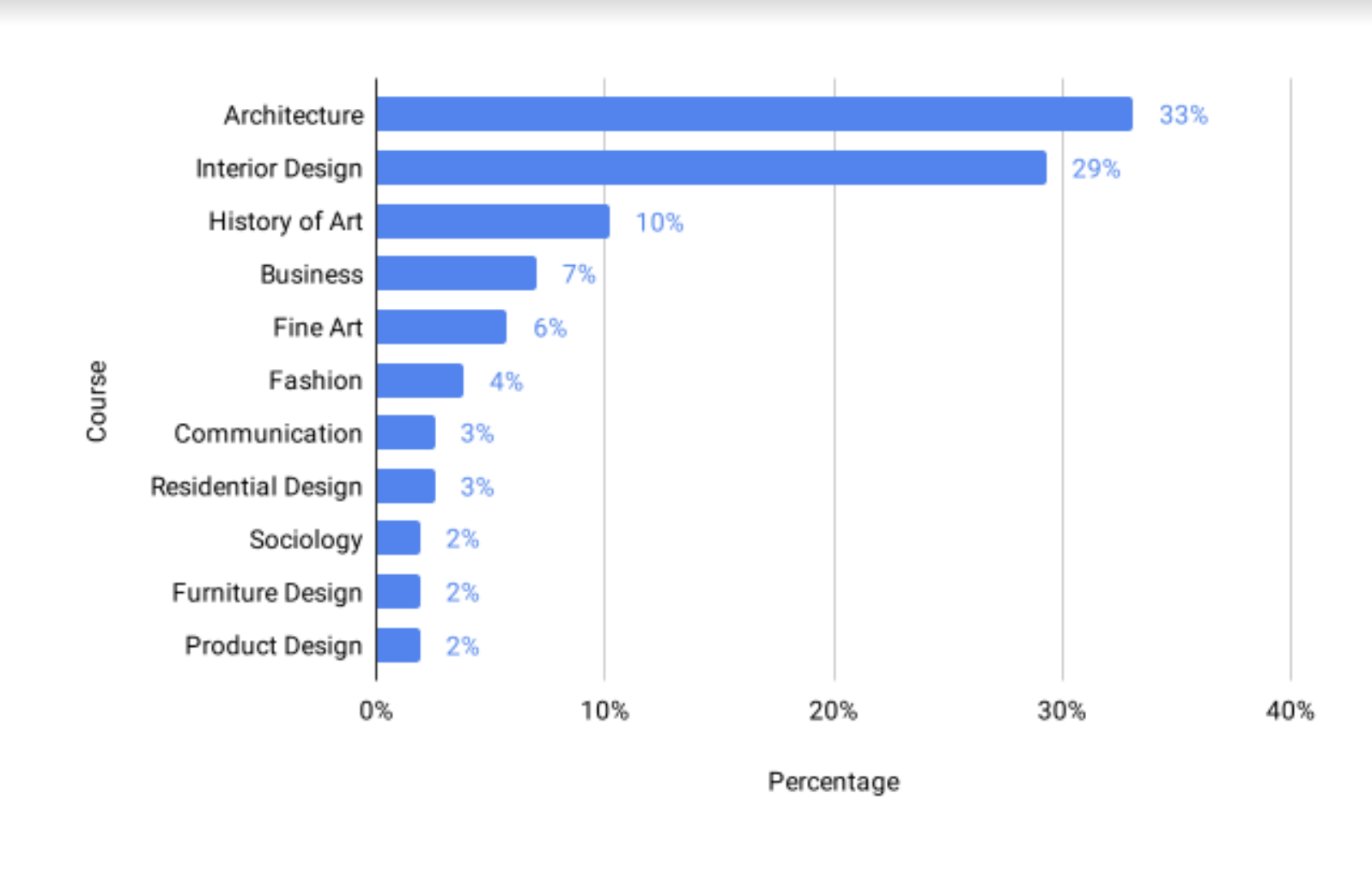
When it comes to the actual subjects that our designers studied, it’s a really mixed bag. Only 29% of designers actually studied interior design. The rest studied a much more varied range of courses. 33% of designers, including Martin Brudnizki and Kelly Wearstler, studied architecture instead of directly studying interior design while 10% of others, such as Tara Craig, studied History of Art. Further down the list we have around 7% studying business, 6% studying fine art, and 4% even studying fashion. It’s clear that the topic you study has very little bearing on your success as a designer, although interestingly, many of these topics are ones which focus around some aspect of design or analysis of how people think.
The Top Interior Trends
So we know that the world’s most famous interior designers don’t always study an interior design course, and some don’t even attend uni altogether, but how do these design experts decorate their own spaces? We looked into the most popular materials, colours, and design styles to see how the best of the best style their homes.

Colour theory is an important aspect of interior design. Colours have the power to affect our moods and emotions and you can utilise them to help influence your day. According to a study that I Want Wallpaper conducted, the colours blue, pink, and white can all promote a feeling of tranquility so are perfect for areas you want to relax in such as bedrooms. Orange is the colour of creativity while green and yellow are the ultimate uplifting colours. If you want to inspire passion, you’ll want to introduce red into your space or, alternatively, black can help you feel powerful and independent.
It’s probably no surprise that the most popular colour our interior designers used in their own homes was the colour white. The peace and tranquility offered by this neutral tone is paramount to a relaxing space but it can also be an excellent blank slate to let other decor choices shine. John Hitchcox is a passionate music buff and property tycoon and has decorated his London-based Victorian villa with white which is the perfect colour to accentuate the natural wood tones throughout. The home is open plan, another popular design style, with lots of greenery and black hardware for a contemporary touch of detail.
Fun fact: Did you know that Jimi Hendrix lived here during 1967 and wrote Purple Haze during his time there?
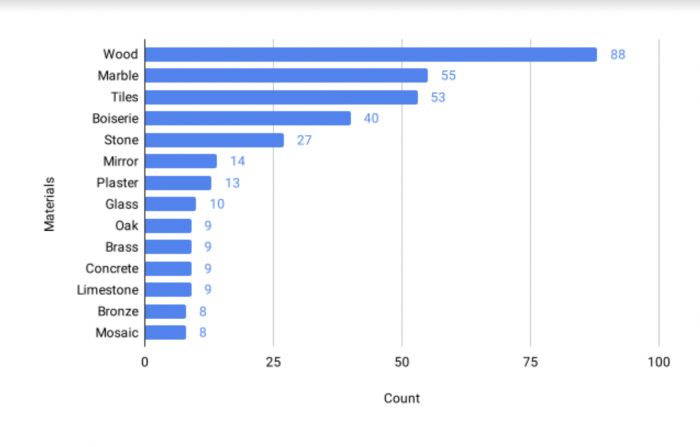
From flooring to walls, furniture to worktops, wood came out on top for the most popular material used. Wood can come in more colours than you can count, adding warm, neutral tones to any flat colour palette. When designing the apartment of a couple in New York, David Collins, an interior designer from Ireland, uses all kinds of wood to create a rich, varied colour palette alongside contemporary pops of colour. We can also see the use of marble in places such as the bathroom which is the second most popular material on our list, favoured for its hardy and luxurious feel. The different materials used all come together to create a space that you can’t help but want to spend time in.
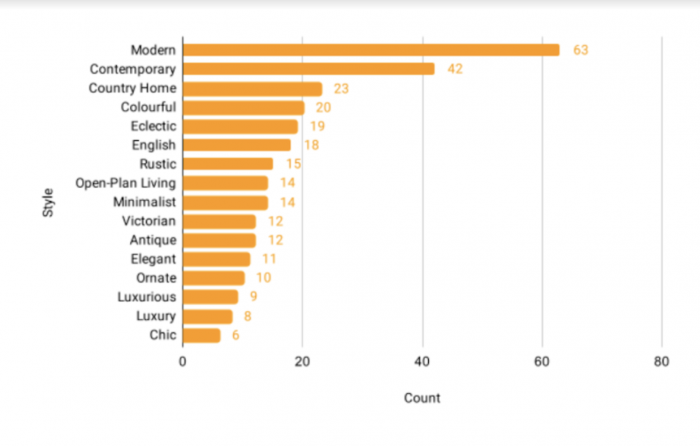
Finally, we come to the styles. From art deco to minimalism, there are a whole host of different decor styles to choose from when it comes to decorating your home. The most popular style on our list was modern – categorised by the use of natural materials, neutral or earthy colors, and the elimination of unnecessary detailing, ultimately resulting in a soothing, neutral space that isn’t overwhelmed by any specific design. British designer, Emily Williams, favours this style by using soothing colours such as white, green, and light browns to create a light and airy feel. The lack of nick nacks and simple colour palette gives an unfussy, comfortable finish to a home that could otherwise feel cluttered or cramped.